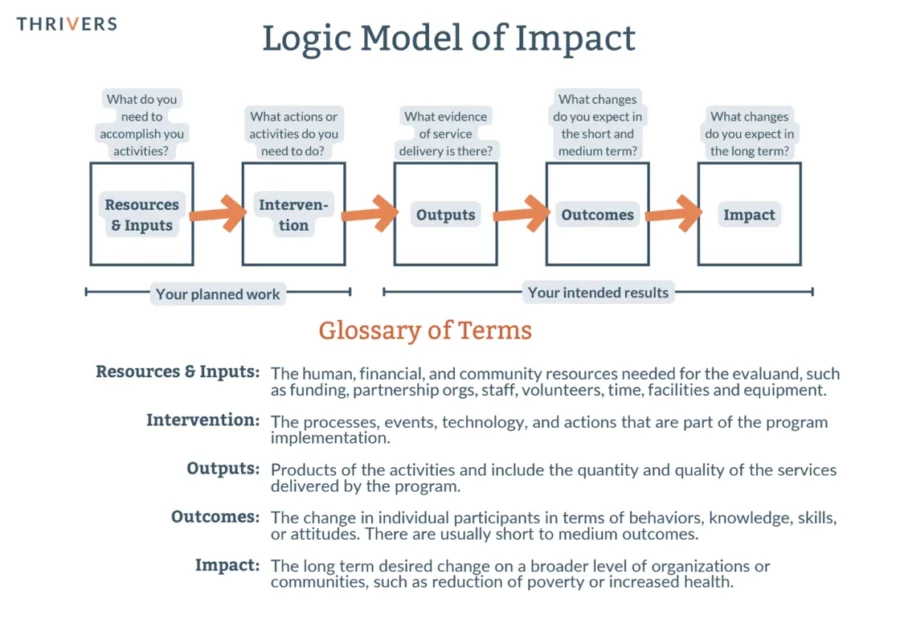Simple question?
Ask five people in your organization and see what you get. Try asking the board, the community, and your clients. The answer is almost always not as simple as it seems.
We’ve found that many nonprofits are struggling with one or more of the following questions:
You may say, what’s the big deal if we don’t know these answers?
Here’s the big deal: If we don’t know the answer to these questions, or responses differ depending on who you ask, there is a high likelihood that you may be delivering charity and not real change.
Meaningful interventions must be built for specific audiences and contexts. What works for middle schoolers likely doesn’t work in the same way for high schoolers. Context and beneficiaries matter.
As nonprofit leaders, the first step is to get aligned and clear on the change you hope to make based on your intervention. Spend some time diving into the research around the results that other similar programs or interventions have made possible. Consider gathering your team to create a logic model or theory of change that you then test and try using validated scales. And finally, measure your hypothesis, and keep measuring.
Is this hard work? It is. But it is also vital to ensure that what we hope and imagine is happening through our work actually is. In fact, it is essential to ensure we are making positive change and that we aren’t producing harm.
Remember–Change, not charity. First, do no harm.
Need help getting started? Check out the logic model template below to get started!
